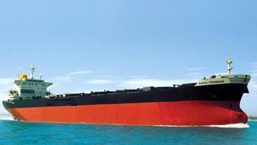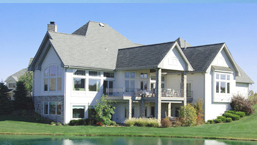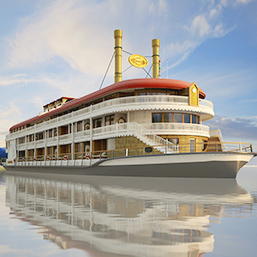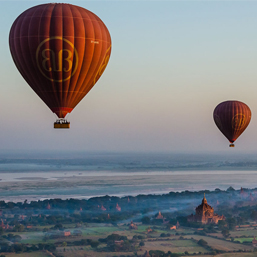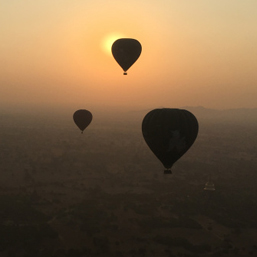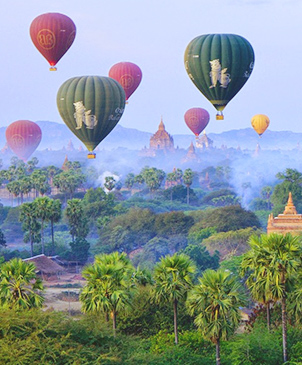
Balloon Ride Tour
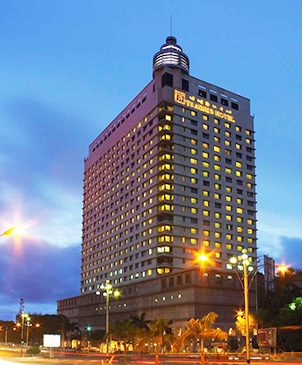
Hotels in Myanmar

Air Ticket Service

Car Rental Service
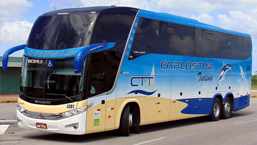
Express Bus Ticket
Mandalay's Environs
Atu-ma-shi Monastery
Not too far from the Kuthodaw Pagoda is the Atu-ma-shi Monastery (the Incomparable Monastery), built in 1878 by King Mindom, and partially destroyed by fire in 1890. It was rebuilt in 1996.
Kyauktawgyi Pagoda
Kyauktawgyi Pagoda(the Pagoda of the Great Marble Image), also built by King Mindom, stand at the foot of Mandalay Hill. Built in 1865, the Pagoda is so called because it houses a large image of the Buddha sculpted from a single block of beautiful Sagyi marble.
Mandalay’s Surroundings
Amarapura
Amarapura is famous for silk weaving industry. Most of the Myanmar people are very proud to wear silk Achiek Longyi on special occasion like the cultural ceremonies. These silk Achiek Longyi are mainly produced in Amarapura. Amarapura lies on the left bank of the Ayarwaddy River (Irrawaddy) and is 11km south of Mandalay It is accessible by car. A suburb of Mandalay, it is also known as Taung-myo (Southern Town) or Myohaung (Old City). It was founded by King Bodawpaya in 1783 as his new capital. Amarapura means “City of Immortality”. Amarapura was the capital city of Myanmar during the Konbaung Dynasty. It was founded by King Bodawpaya in 1982 A.D., as the king transferred the capital from Inwa (or Ava). King Bagyidaw, grandson of Bodawpaya shifted the capital back to Innwa in 1823, but King Tharawaddy his successor, again took the capital back to Amarapura in 1837 and it remained as the capital until King Mindon built Mandalay in 1857 and shifted the capital there in 1860. Amarapura is famous for the Silk Weaving Industry, the world’s longest wooden bridge (U Bein Bridge), and Mahagandayon Monastery (one of the Buddhist Universities).
In-wa (Ava)
Inwa was formerly known as Ava and it is located 21kms from Mandalay. Inwa was also known as Yadana Pura. It was first founded as a capital by King Thado Minbya in 1364 A.D. It is located the confluence of the Ayeyarwaddy and Myit Nge rivers. But the king had a canal dug to join the Myit Nge and Myit Tha rivers, thus cutting off the capital as an island, safe from enemy attacks. The ruins of the palace, the massive fort walls and moat can still be seen as the splendour of the past when it had been the capital for more than four and a half centuries. Inwa lies south of Mandalay and takes only 30 minutes by car to reach there.
Mingun
Mingun is located on the western bank of the Ayeyarwaddy (Irrawaddy) River, approximately seven miles north of Mandalay. It is accessible by either crossing the famous Ava Bridge (more than 100 years old) or by ferryboats across the river. It takes an hour when going up-river and 40 minutes for down-river. (If you are in luck, you may be able to see the Ayeyarwaddy dolphins swimming up and down the Ayeyarwaddy River.) Mingun is famous for its bronze bell which is the second largest bell in the world.And the venerable Buddhist monk, Mingun Sayadaw, who was noted in the Guiness World Record Book for was ability to memorize Tri-pitakas (Buddha’sTeachings by heart), was from this same Mingun village. A boat trip to Mingun is pleasant with plenty of life to see on the river. The Pahtodawgyi is a wonderful building in Mingun. It was built by King Bodaw Badon in 1791. From the top of the Mingun Pahtodawgyi, one can view the scene of Mingun and Ayeyawaddy River. You can use the stairs to climb to the top. There are altogether 174 steps.
Sagaing
Once an ancient capital, Sagaing lies 21km south-west of Mandalay on the west bank of the Ayeyarwaddy (Irrawaddy) River. Sagaing became the capital of an independent Shan Kingdom around 1315 after the fall of Bagan. Its period of importance was short, for in 1364, the founder’s grandson Thado Minbya moved his capital across the river to Inwa. From 1760 to 1764, Sagaing was once again the capital. Today, Sagaing is popularly chosen as a meditation centre. Many Buddhists all over the country would visit Sagaing for the purpose of religious retreat. The population of Sagaing Division is 538,000, and the average population density is 139 persons per square mile.
Sagaing Hill
Once you cross the Sagaing Bridge, you can see the hilltops, each crested with pagodas, and banners proclaiming Buddha’s teaching. It is the famous refuge from all ills and tribulations where over 600 monasteries housing monks and nuns are located for Buddhist studies and meditation. The Padamyazedi pagoda dates back from 1300, whilst the Umin Thonze or thirty caves pagoda has many Buddha images in crescent shaped colonnade. Mural paintings can be seen in the Tilawkaguru cave temple which was built around 1672. At nearby village of Ywahtaung, one can see silversmiths in the process of making bowls and other items of silver by traditional methods. The most impressive Soon Oo Pon Nya Shin Pagoda nearby was constructed in 1312. The view of Sagaing from Soon Oo Pon Nya Shin and its approach is really marvelous.
YTT Business Group
ISO 9001 : 2015 Registration Company
- Seafarer Recruitment & Placement Services (Approved by DMA), American Bureau of Shipping (ABS) Quality Evaluations ISO 9001:2015 Quality Management System the Registration No : 55527)
- Travels & Tours (Recognized Member of ASTA, American Society of Travel Agents - Reg No. : 900258630 )
- Real Estate (House ,Condo ,Apartments, Flats and Land)
Licensed, Registered and Certified by:
 |
 |
 |
 |
 |
|
| Myanmar Hotel & Tourism | UMTA | DMA | ISO 9001:2015 | ASTA (American Society of Travel Agents) |
Contact Info
Yangon Head Office Address
No.631/A, 1st Floor, Aung Thitsar (2) Street, Thaketa Township, Yangon, Myanmar.
Tel : +95-9-264 254 488, +95-9-788 821 929
Skype: yttinternational
Email : ytt@ytt-international.com, tour@ytt-international.com
Bagan / Nyaung U Branch Office Address
Lanmadaw 2 Road ( Beside of Eden Motel-3 )Myoma Kwet Thit Ward ( No 3 Block ) Nyaung U, Mandalay.
(Near Nyaung U Market / Mani Sithu Market )
Tel : +95-9-761 690 802
Website : www.ytt-international.com, www.myanmartourismytt.com
 YTT Business Group
YTT Business Group
